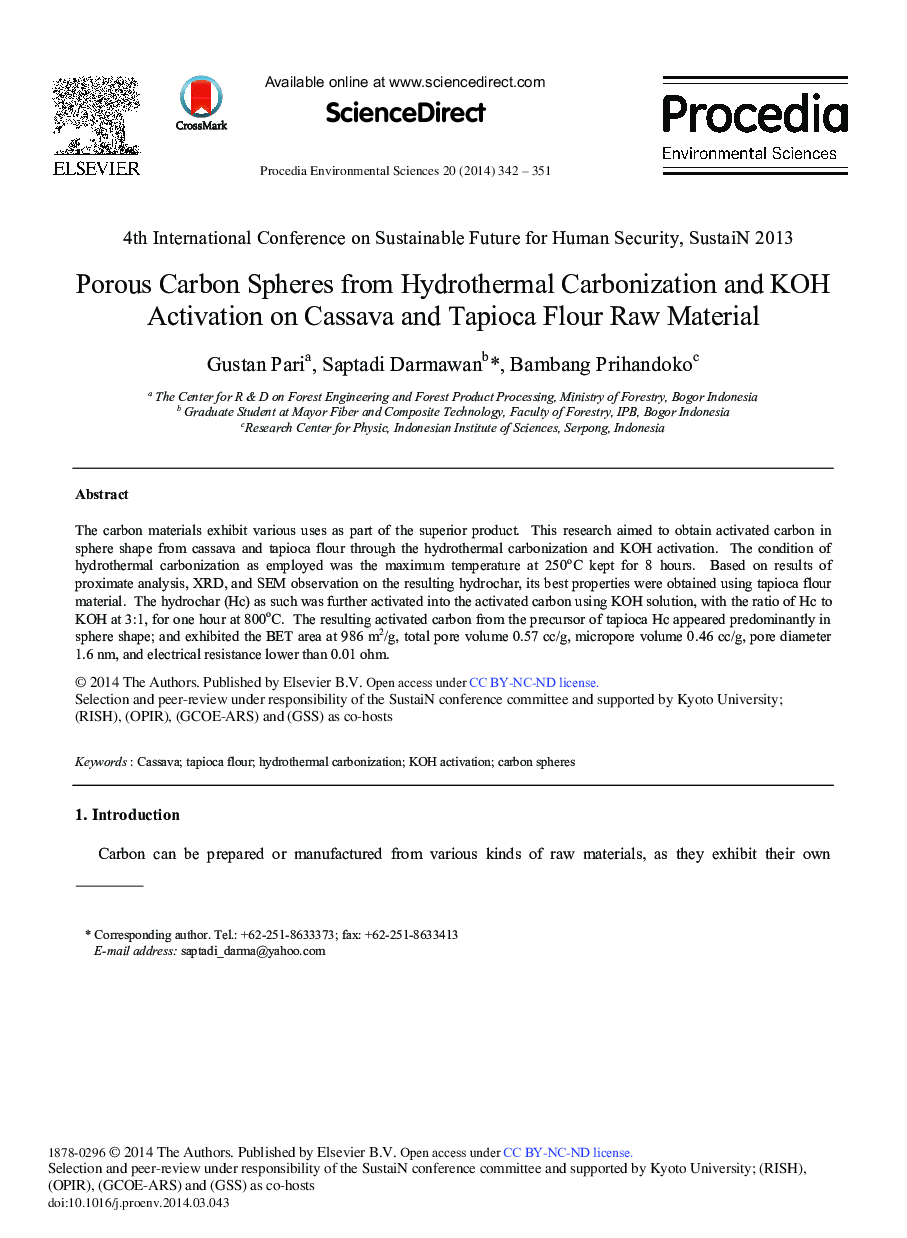| Article ID | Journal | Published Year | Pages | File Type |
|---|---|---|---|---|
| 4402235 | Procedia Environmental Sciences | 2014 | 10 Pages |
The carbon materials exhibit various uses as part of the superior product. This research aimed to obtain activated carbon in sphere shape from cassava and tapioca flour through the hydrothermal carbonization and KOH activation. The condition of hydrothermal carbonization as employed was the maximum temperature at 250 °C kept for 8 hours. Based on results of proximate analysis, XRD, and SEM observation on the resulting hydrochar, its best properties were obtained using tapioca flour material. The hydrochar (Hc) as such was further activated into the activated carbon using KOH solution, with the ratio of Hc to KOH at 3:1, for one hour at 800 °C. The resulting activated carbon from the precursor of tapioca Hc appeared predominantly in sphere shape; and exhibited the BET area at 986 m2/g, total pore volume 0.57 cc/g, micropore volume 0.46 cc/g, pore diameter 1.6 nm, and electrical resistance lower than 0.01 ohm.
